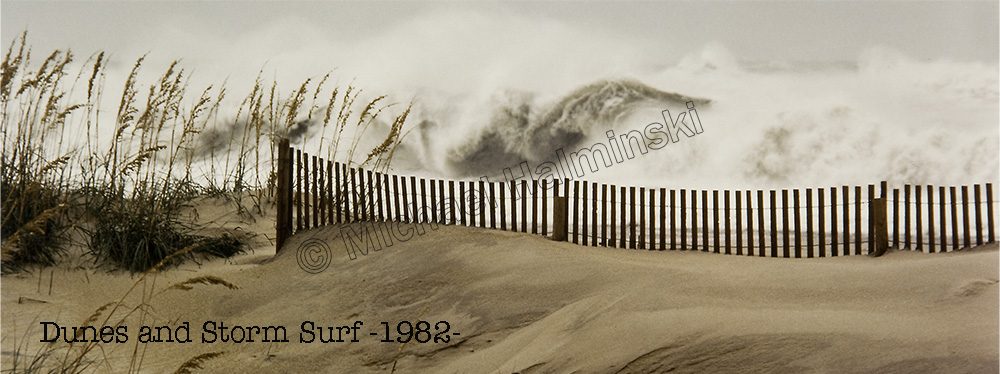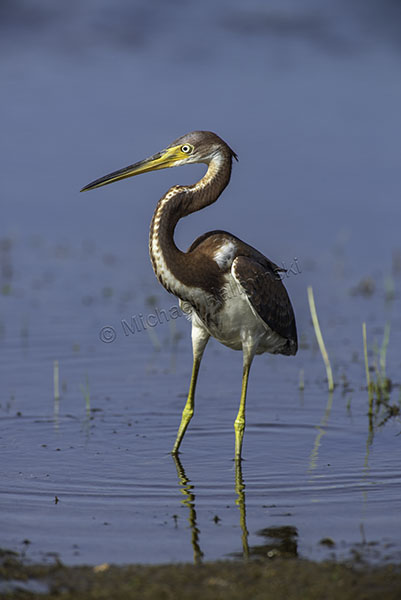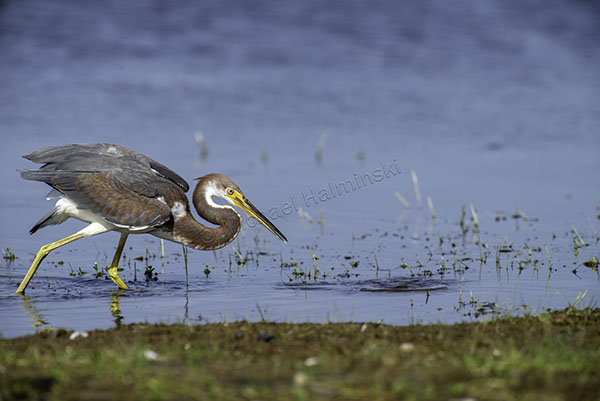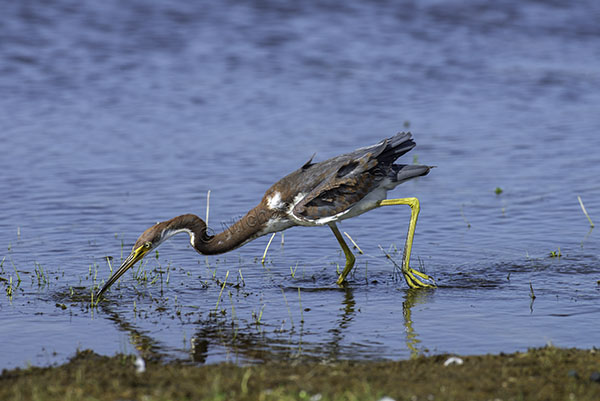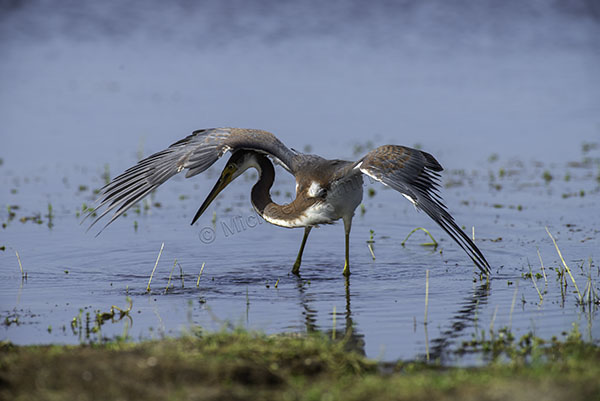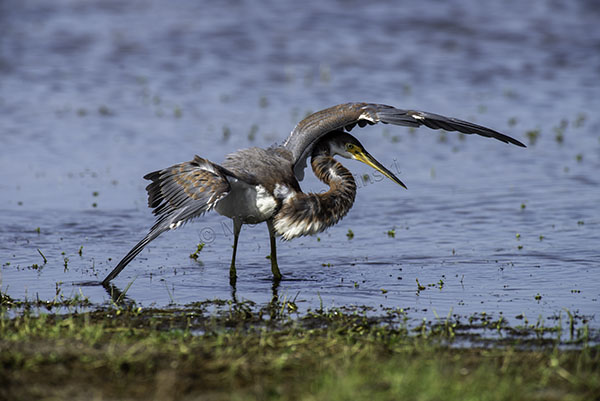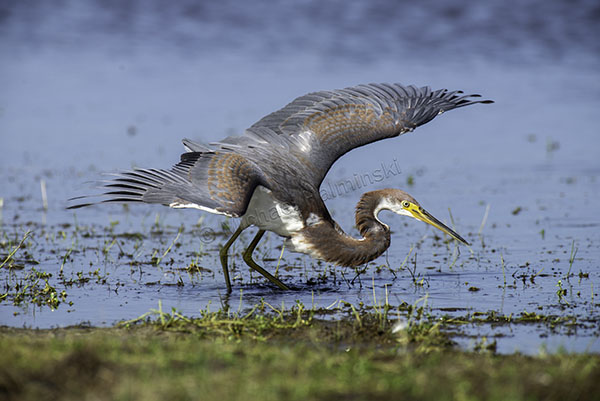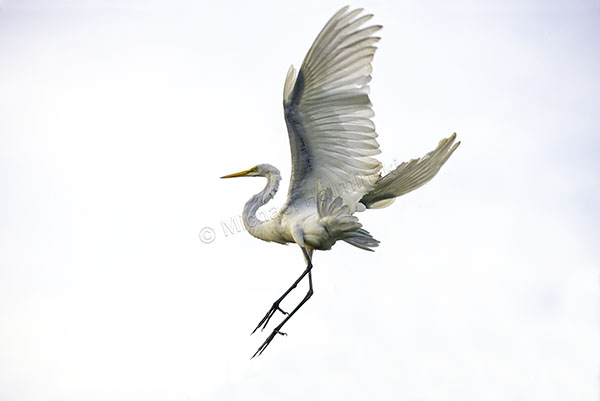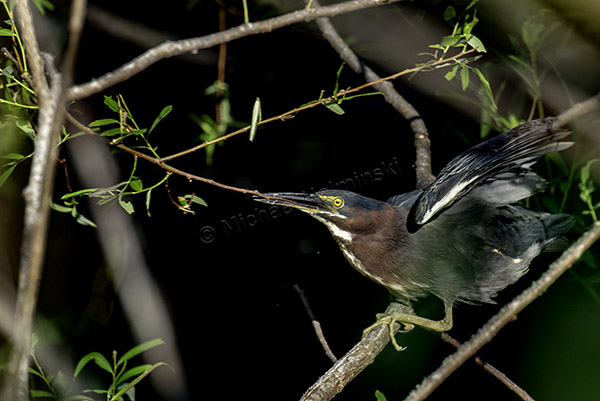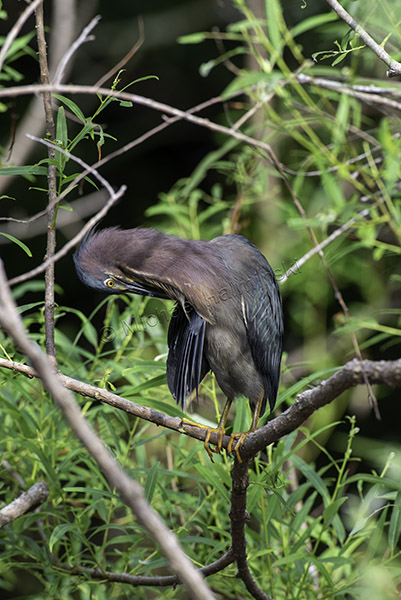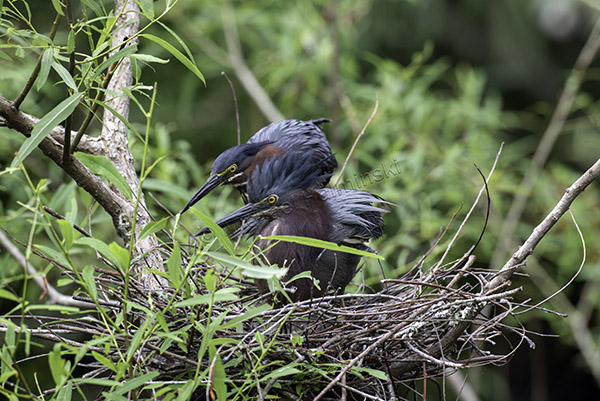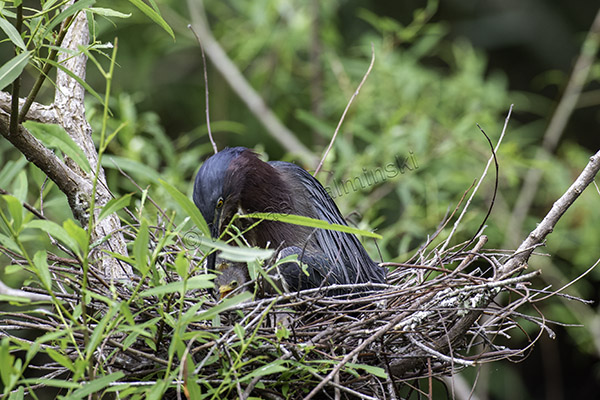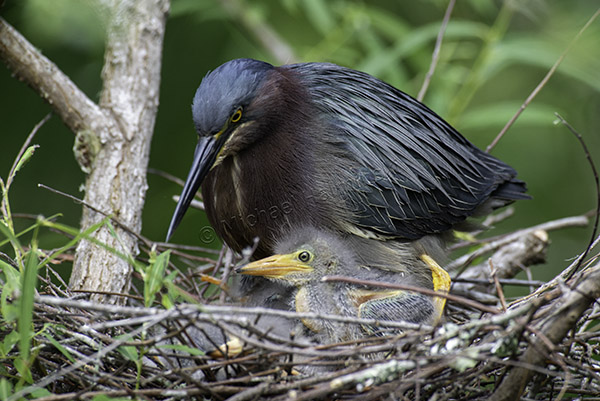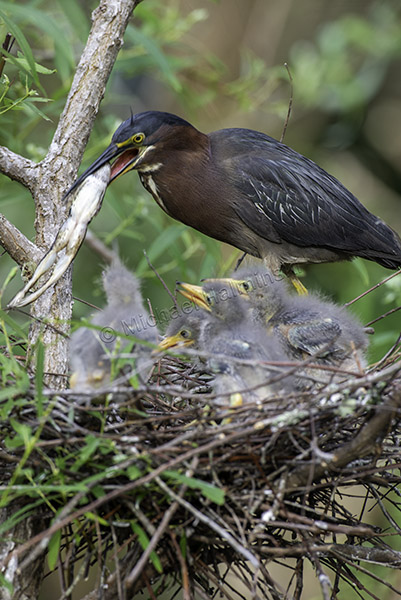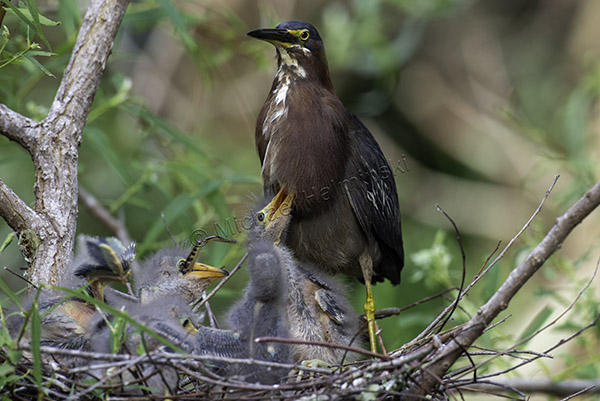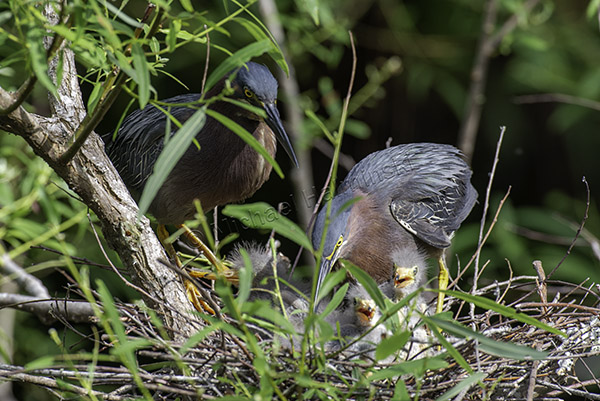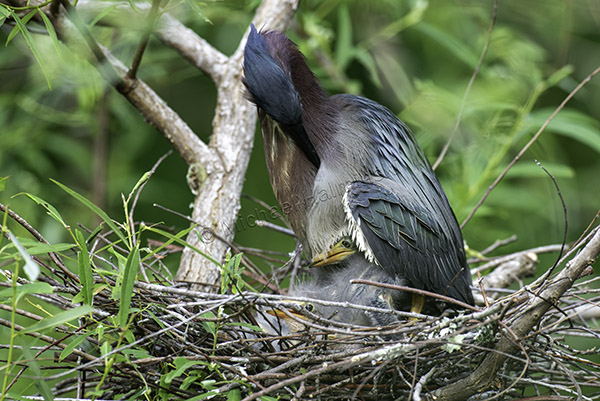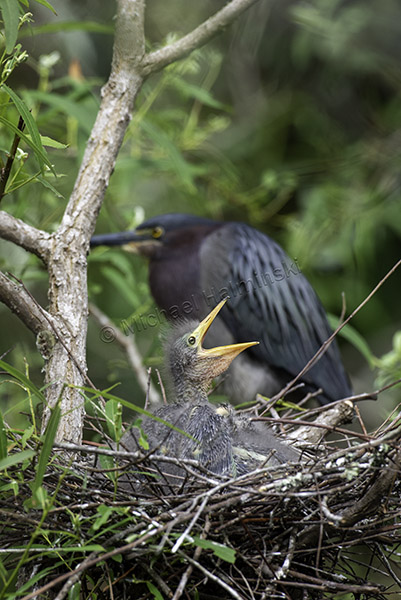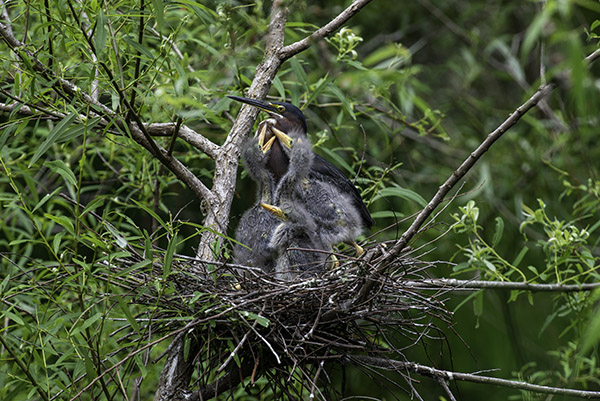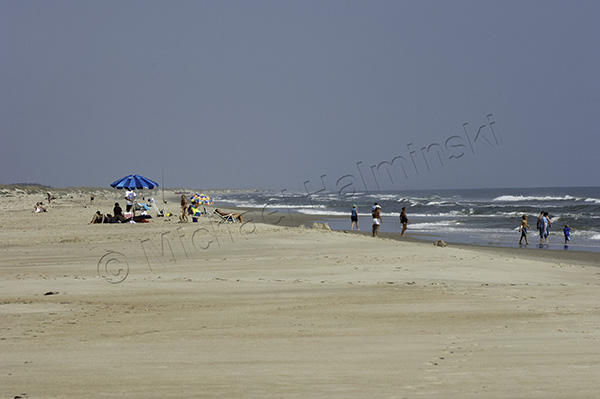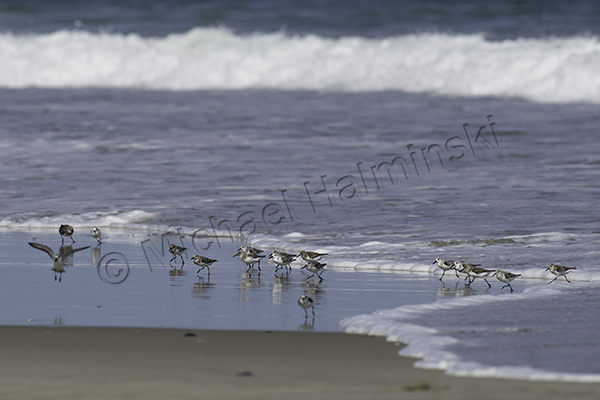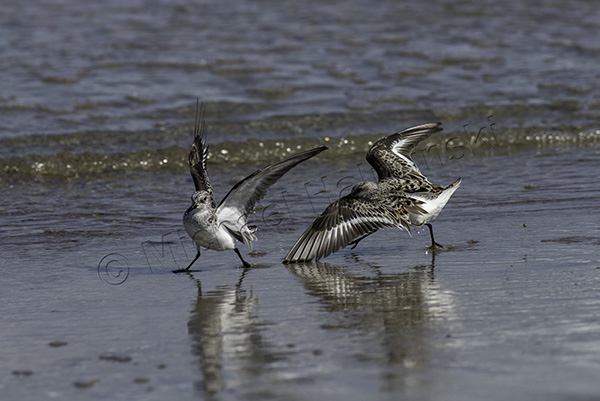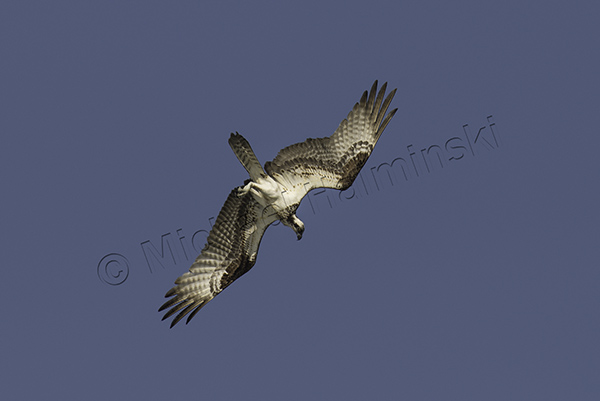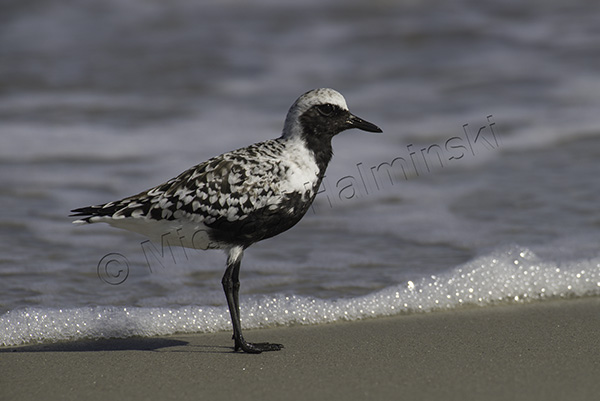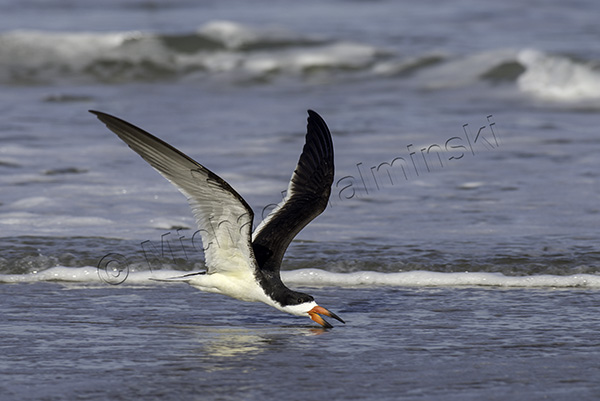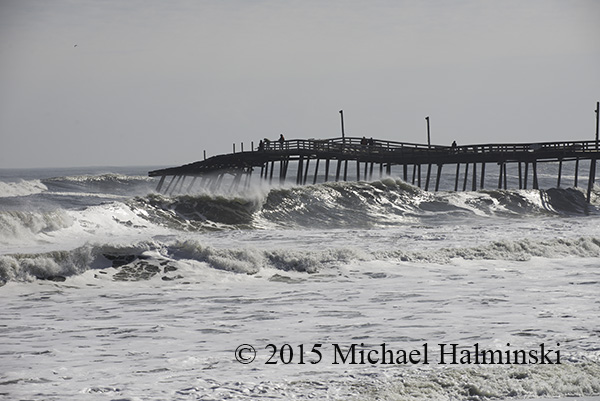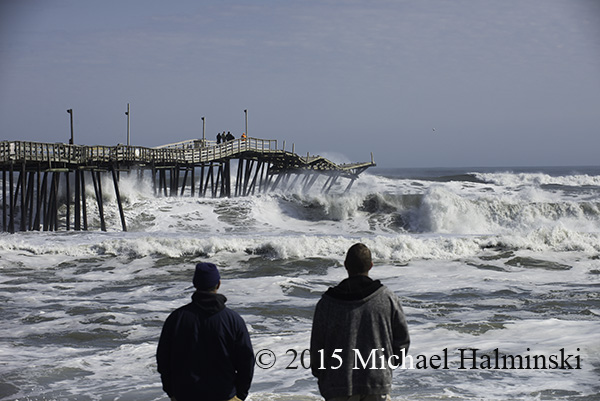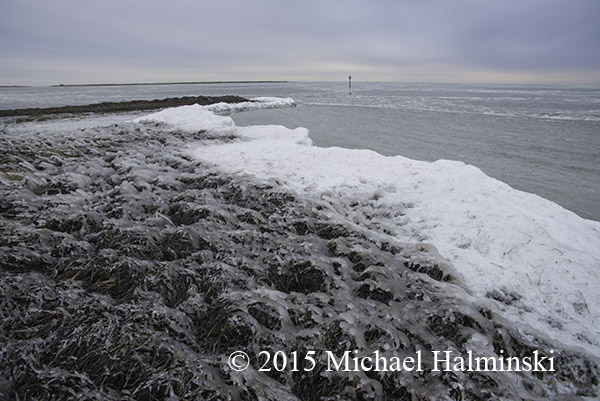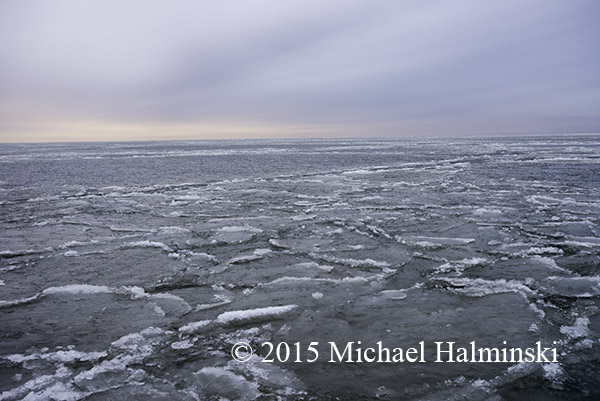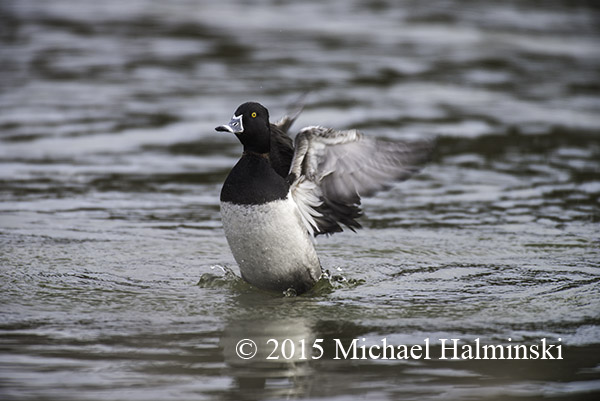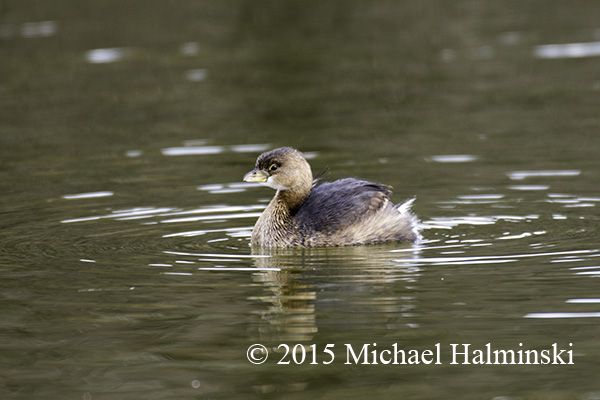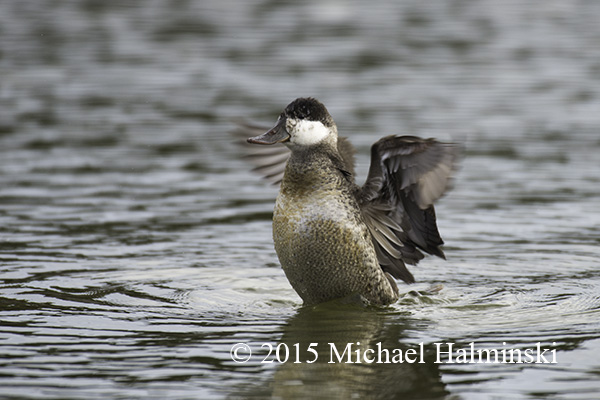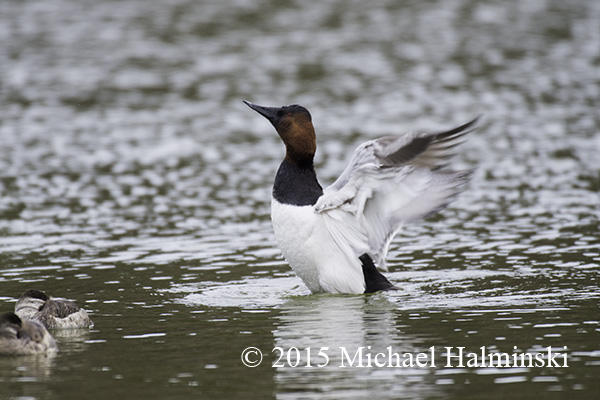My first encounter with herons began in 1975 on Gull Island, several miles southwest of my home. Johnny Hooper took me there and I was enthralled with the nesting bird life, including gulls, terns, pelicans and a variety of herons. Consequently I revisited the island numerous times in attempts to photograph them. I found the herons to be particularly attractive from an artistic and photographic standpoint.
Being isolated by Pamlico Sound waters, Gull Island is a haven for nesting waterbirds. On one of my early trips, I saw an elongated neck sticking above the scrubby vegetation. It was a nesting tricolored heron minding a newly hatched chick. It did not appreciate my curiosity and on my approach, flew off. I remember the chick looking up at me helplessly. Not lingering long, I walked away, and the adult promptly returned. Ever since I’ve relished opportunities to respectfully shoot herons.
Three weeks ago, I learned of some wading birds feeding in a pond near the lighthouse. When I got there, I was happy to see several tricolored herons in the mix.
Herons are designed for what they do best, hunting shallow water.
Looking for a meal, they use their large wings to distract prey.
A long pointed bill, concealed in shade, is the tool of choice.
This heron’s feeding dance mesmerized me.
Last week as we had dinner on our back deck, a Great Egret landed in a live oak next to us. Then I made this unexpected grab shot.
So far, this has been my year of the heron, a symbol of good luck!
